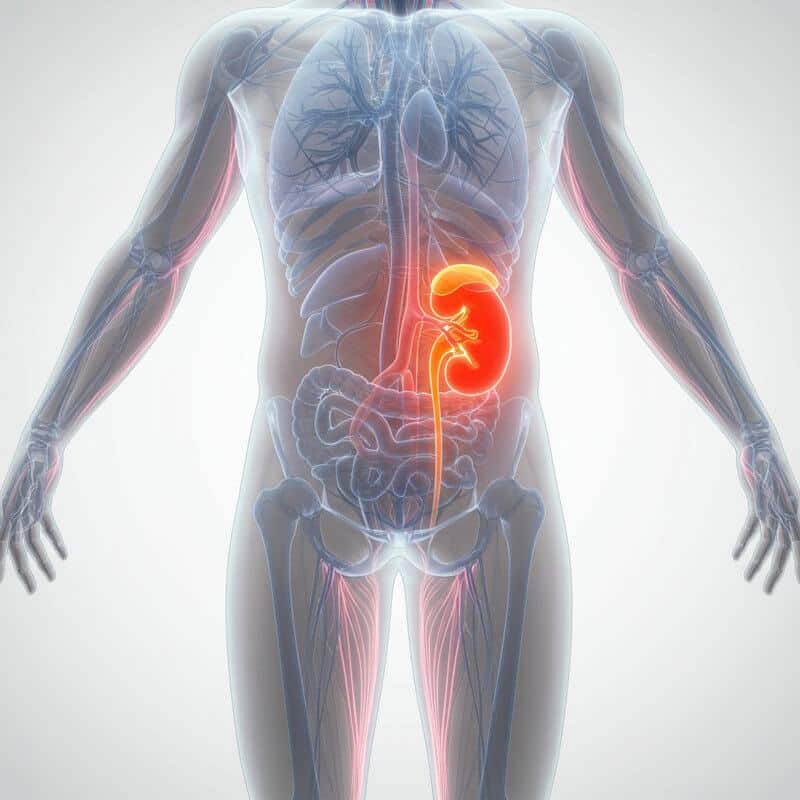Signs and Symptoms of Cancer
Cancer remains one of the world’s leading causes of death, with the World Health Organization estimating nearly 10 million deaths globally in 2020. This complex disease can affect virtually any organ or body system, from the lungs and breasts to the blood and digestive tract. Late-stage diagnosis is common due to vague or unnoticed early symptoms, complicating effective treatment. Early recognition of warning signs is essential for improving survival rates, highlighting the need for greater awareness and timely medical intervention (IARC GLOBOCAN 2020).
1. Unexplained Weight Loss

Unexplained weight loss is a common symptom of many cancers, particularly those of the pancreas, stomach, esophagus, or lung. This occurs when cancer cells alter the body’s metabolism, leading to increased energy consumption and the release of inflammatory substances called cytokines. These changes can result in the rapid breakdown of fat and muscle, even if a person’s appetite and eating habits remain unchanged. In real-world scenarios, individuals may notice their clothes fitting looser, or receive comments from friends or family about their thinner appearance, despite no intentional efforts to lose weight.
According to the American Cancer Society, losing more than 10 pounds unintentionally can be an early warning sign, particularly in cancers of the digestive system. While weight fluctuations can result from stress, thyroid disorders, or other non-cancerous causes, persistent, unexplained weight loss—especially when accompanied by other symptoms—should prompt timely medical evaluation. Early investigation can help identify underlying conditions, including cancer, at a stage when treatment is most effective. For more information, visit the National Cancer Institute.
2. Persistent Fatigue

Persistent fatigue is a profound and ongoing sense of tiredness that does not improve with rest and is a frequent symptom in many cancer patients. Tumors can cause fatigue directly by releasing substances that disrupt normal cellular functions, or indirectly by causing anemia—a condition in which there are not enough red blood cells to carry adequate oxygen throughout the body. As a result, individuals may feel exhausted even after a full night’s sleep or struggle to complete routine activities, such as walking up stairs or preparing meals.
For example, someone who previously enjoyed regular exercise might find it difficult to finish a workout or notice a significant decrease in energy at work. Unlike everyday tiredness caused by stress or lack of sleep, cancer-related fatigue is relentless and can interfere with daily life for weeks or months. According to the American Cancer Society, fatigue that is severe, long-lasting, and unexplained by lifestyle should prompt a visit to a healthcare provider. Timely assessment can help identify or rule out underlying causes, including cancer or other serious conditions.
3. Fever of Unknown Origin
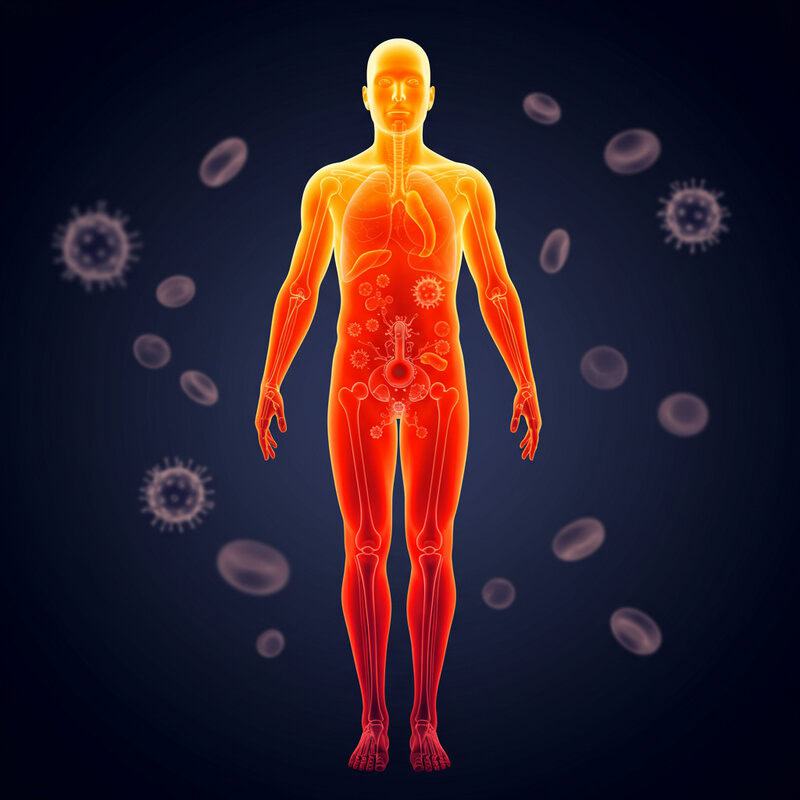
Fever of unknown origin is a persistent or recurring elevated body temperature that cannot be readily explained by common infections or other obvious causes. Certain cancers, such as lymphoma and leukemia, frequently trigger prolonged fevers because the immune system responds to abnormal cancer cells by releasing pyrogens—substances that raise the body’s temperature. Unlike typical infections, where fevers are often accompanied by symptoms like sore throat or cough and resolve within days, fevers related to cancer may last for weeks and lack a clear source.
For example, someone might experience low-grade fevers at night or intermittent spikes in temperature, despite not feeling sick otherwise or having no obvious signs of infection. According to the American Cancer Society, a prolonged or unexplained fever—especially one that persists for more than a week, recurs frequently, or is accompanied by night sweats or weight loss—should prompt medical evaluation. While most fevers are caused by viral or bacterial infections, ongoing fever without a clear cause may indicate an underlying malignancy and warrants thorough investigation. More information can be found at the National Cancer Institute.
4. Night Sweats

Night sweats refer to episodes of excessive sweating during sleep that can soak clothing and bedding, often severe enough to disrupt rest. While night sweats can result from common causes like menopause or infections, they are also a classic symptom of certain cancers, particularly lymphoma and leukemia. Unlike menopausal hot flashes, which are often associated with hormonal fluctuations and can occur throughout the day, cancer-related night sweats are typically persistent, drenching, and may occur without any apparent trigger or fever.
Infections usually produce night sweats accompanied by other acute symptoms, such as chills, sore throat, or cough, and they tend to resolve once the infection is treated. In contrast, cancer-related night sweats may persist for weeks or months and often occur alongside other concerning signs like unexplained weight loss or persistent fever. To help your healthcare provider assess this symptom, consider keeping a symptom diary that records the frequency, duration, and severity of night sweats. The Macmillan Cancer Support website offers practical advice on symptom tracking and further information on when to seek medical attention.
5. Unexplained Pain

Unexplained pain can be an early or late sign of cancer, depending on its type and location. Tumors may cause pain by pressing on nearby nerves, organs, or bones, or through the release of chemicals that irritate surrounding tissues. For instance, bone cancer often presents as persistent, deep pain in the affected area, which might worsen at night or during activity. Unlike pain from injury or overuse, cancer-related pain usually does not resolve with rest or routine painkillers and may progressively intensify over time.
It’s important to monitor new, unexplained, or persistent pain—especially if it lasts more than a few weeks, does not improve, or is associated with other symptoms like swelling or weight loss. Keeping a pain diary can help you and your healthcare provider track the pain’s location, severity, frequency, and any aggravating or relieving factors. According to the National Cancer Institute, timely evaluation of ongoing pain is crucial for early diagnosis and effective management of potential underlying causes, including cancer.
6. Lumps or Masses

Lumps or masses often develop when abnormal cells grow and accumulate in one area, forming a tumor. In many cancers, such as breast cancer and testicular cancer, new or unusual swellings are frequently the first noticeable signs. These lumps may be painless, firm, and steadily enlarging over time, or they might cause tenderness or discomfort. Not all lumps are cancerous—some may result from benign cysts or infections—but any persistent or growing mass warrants careful attention.
Regular self-examination is a key tool in early detection. For example, monthly breast self-exams can help individuals become familiar with their normal breast tissue and promptly recognize any changes in size, shape, or texture. Similarly, testicular self-exams can identify new masses or swelling that should be evaluated by a healthcare provider. According to the National Cancer Institute, early identification and assessment of lumps are crucial, as prompt diagnosis and treatment can significantly improve outcomes. If you notice a new or unusual lump, schedule a medical evaluation—even if it is painless or small.
7. Skin Changes

Skin changes can be an important warning sign of cancer, particularly skin cancers like melanoma. These changes may include the appearance of new moles, alterations in the color, size, or shape of existing moles, or the development of sores that do not heal. Melanoma, for example, often presents as a mole with irregular borders, multiple colors, or asymmetrical shape. Other skin cancers may show as persistent red patches, rough or scaly areas, or unusual growths that bleed or crust over.
Regular self-checks are vital for early detection. Examine your skin from head to toe each month, paying close attention to areas that are hard to see, such as your back and the soles of your feet. Use the ABCDE rule (Asymmetry, Border, Color, Diameter, Evolving) to evaluate moles and spots. According to the National Cancer Institute, report any suspicious or changing skin lesions to a healthcare provider promptly. Early professional evaluation is especially important, as skin cancers are highly treatable when caught early.
8. Changes in Bowel Habits
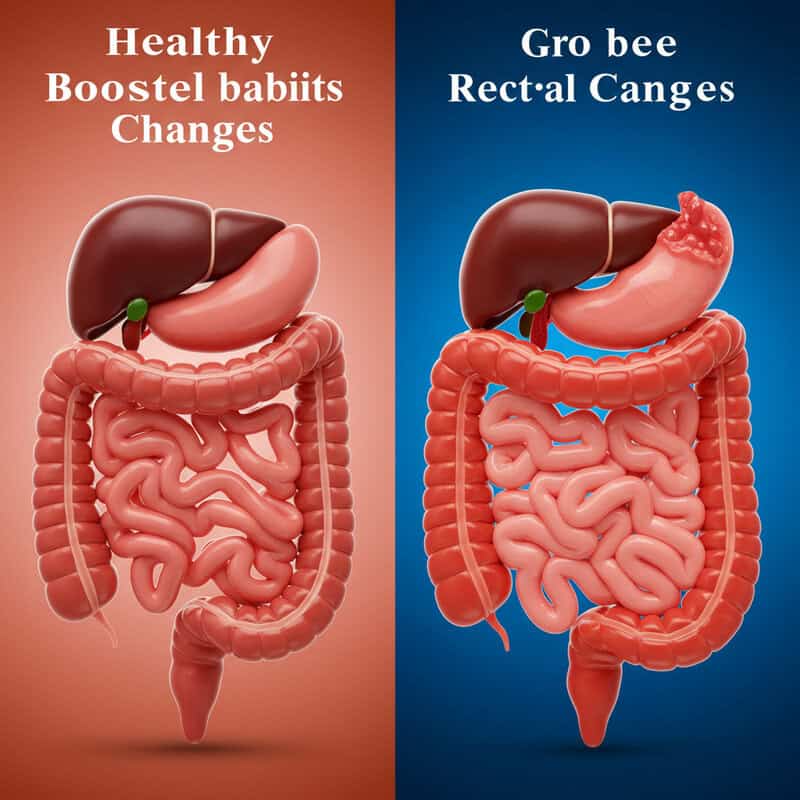
Changes in bowel habits can be a significant sign of colon or rectal cancer. These changes might include persistent diarrhea or constipation, a noticeable shift in stool frequency, or alterations in the shape and appearance of stool, such as pencil-thin stools. Blood in the stool—either bright red or very dark—can also indicate bleeding in the digestive tract. For example, someone who previously had regular daily bowel movements might begin experiencing alternating bouts of constipation and diarrhea, or notice their stool has become consistently narrower over several weeks.
While short-term changes in bowel habits are often related to diet, stress, or minor infections, lasting symptoms—particularly those persisting for more than a few weeks—should not be ignored. According to the American Cancer Society, ongoing changes accompanied by other symptoms like abdominal pain, unexplained weight loss, or fatigue warrant prompt evaluation by a healthcare provider. Early investigation can help detect colorectal cancer at an earlier, more treatable stage. For guidance on recognizing symptoms and when to seek medical attention, visit the National Cancer Institute.
9. Changes in Bladder Habits

Changes in bladder habits can be an early indicator of cancers affecting the urinary system, such as bladder cancer or prostate cancer. Symptoms may include increased urinary frequency, a sudden or urgent need to urinate, difficulty starting or stopping urination, pain or burning during urination, or the presence of blood in the urine (hematuria). Some individuals may also experience a weak urine stream or a feeling of incomplete emptying of the bladder.
For example, a person might find themselves waking up multiple times at night to urinate or rushing to the bathroom more often than usual during the day. While temporary changes in bladder habits can result from urinary tract infections or increased fluid intake, persistent symptoms that last more than a few days should be evaluated by a healthcare provider. The NHS recommends noting the onset and frequency of symptoms, as early recognition and reporting can lead to timely diagnosis and improved treatment outcomes. It is important not to dismiss ongoing changes, especially if accompanied by other symptoms like pelvic pain or unexplained fatigue.
10. Persistent Cough or Hoarseness

Persistent cough or hoarseness can be significant warning signs of cancers affecting the respiratory tract, particularly lung cancer and throat cancer. A chronic cough that lasts more than three weeks, worsens over time, or produces blood-tinged sputum may be caused by a tumor irritating the airways or vocal cords. Hoarseness, on the other hand, can result from cancer affecting the voice box (larynx) or nerves controlling the vocal cords, leading to a raspy or weak voice.
For instance, someone who develops a cough that doesn’t improve with over-the-counter remedies, or experiences ongoing changes in their voice without a cold or upper respiratory infection, should take these symptoms seriously. According to the National Cancer Institute, persistent cough or hoarseness—especially when accompanied by chest pain, shortness of breath, or unexplained weight loss—should prompt timely medical evaluation. Early assessment can help distinguish between benign causes and more serious conditions like cancer, allowing for effective intervention and potentially better outcomes.
11. Difficulty Swallowing

Difficulty swallowing, also known as dysphagia, can be a crucial symptom of cancers affecting the esophagus or throat. Tumors in these areas can narrow the passage or disrupt normal muscle function, making it challenging for food or liquids to move smoothly from the mouth to the stomach. Individuals may notice a sensation of food “sticking” in the throat, pain when swallowing, or even choking and coughing during meals. Over time, persistent dysphagia can lead to unintended weight loss or malnutrition.
Common, non-cancerous causes of difficulty swallowing include acid reflux, infections, or minor throat injuries, which typically resolve within a few days. However, when dysphagia persists for more than two weeks, worsens, or is associated with other symptoms like hoarseness or unexplained weight loss, it may signal a more serious underlying problem. The American Cancer Society and National Cancer Institute both recommend seeking prompt medical evaluation for ongoing swallowing difficulties. Keeping track of symptom duration, severity, and associated changes can help healthcare providers determine the cause and recommend appropriate diagnostic testing or treatment.
12. Unusual Bleeding or Bruising

Unusual bleeding or bruising can be an alarming symptom and is sometimes linked to underlying cancers. Tumors may erode blood vessels or disrupt normal clotting processes, resulting in blood appearing in the stool, urine, or from unexpected sites like the gums or nose. For example, leukemia, a cancer of the blood and bone marrow, often impairs the body’s ability to produce normal platelets, leading to frequent or unexplained bruising and bleeding. Individuals may notice tiny red spots (petechiae), large bruises without clear cause, or prolonged bleeding from minor cuts.
Blood in the stool or urine may also be a sign of cancers in the digestive or urinary tract. According to the National Cancer Institute, any episode of unexplained bleeding—especially when persistent or accompanied by other symptoms like fatigue or weight loss—should be taken seriously and discussed promptly with a healthcare provider. Keeping a record of when, where, and how often bleeding occurs can help guide diagnostic evaluation. Early recognition and intervention are crucial for optimal management and can be life-saving in some cases.
13. Persistent Indigestion or Heartburn

Persistent indigestion or heartburn can sometimes be an early sign of cancers affecting the stomach or esophagus. While occasional heartburn is common and often related to diet or stress, cancer-related symptoms tend to last longer and are less responsive to standard over-the-counter treatments. Tumors in the stomach or esophagus can interfere with normal digestion, leading to a burning sensation, discomfort, bloating, or even pain after eating. Some individuals may also experience nausea, early satiety (feeling full quickly), or unintentional weight loss.
For example, someone might notice that their heartburn becomes a daily occurrence, persists for weeks despite lifestyle modifications, or is accompanied by difficulty swallowing or vomiting. According to the American Cancer Society, it is important to differentiate routine, short-term indigestion from persistent symptoms that last more than two weeks or worsen over time. If indigestion is ongoing, severe, or associated with additional warning signs such as black stools or unexplained weight loss, medical evaluation is essential. The National Cancer Institute recommends seeking prompt assessment to rule out serious conditions, including cancer.
14. Sores That Don’t Heal

Sores that don’t heal can be a significant indicator of underlying cancers, particularly oral and skin cancers. Cancerous cells disrupt the normal healing process by invading healthy tissue, impairing blood flow, and provoking chronic inflammation in the affected area. For example, an oral cancer may present as a painless ulcer or sore in the mouth that lingers for weeks, while skin cancers such as basal or squamous cell carcinoma can appear as persistent open wounds, scabs, or crusted patches that fail to close or improve with time.
In contrast, minor injuries from accidental bites, burns, or scrapes usually heal within a week or two as part of the body’s natural repair processes. According to the American Cancer Society, any sore in the mouth, on the lips, or elsewhere on the skin that does not heal within three weeks should be evaluated by a healthcare provider. Early diagnosis is critical, as persistent sores may be the first sign of cancer. For more information, visit the National Cancer Institute.
15. White or Red Patches in the Mouth

White or red patches in the mouth can serve as important early warning signs of oral cancers. Leukoplakia refers to thick, white patches that form on the gums, tongue, or lining of the mouth, while erythroplakia describes flat or slightly raised red lesions. Both conditions can result from chronic irritation, often due to tobacco use or heavy alcohol consumption, but they may also be precancerous or indicate the presence of cancerous changes in oral tissues.
These patches are typically painless and do not scrape off easily, differentiating them from temporary irritations or oral infections such as thrush. According to the American Cancer Society, persistent white or red patches lasting longer than two weeks should be evaluated by a dental or medical professional. Regular dental check-ups are crucial for early detection, as dentists can identify subtle changes in the mouth that may go unnoticed. If any unusual patches or sores persist, prompt assessment and, if necessary, a biopsy can ensure timely diagnosis and improve treatment outcomes. For more guidance, visit the National Cancer Institute.
16. Persistent Bloating

Persistent bloating is a symptom that may be linked to ovarian cancer, particularly when the sensation of fullness or swelling in the abdomen lasts for weeks and is not relieved by lifestyle changes. Ovarian tumors can cause fluid buildup (ascites) or directly affect the digestive organs, leading to ongoing bloating and discomfort. Unlike temporary bloating caused by overeating, indigestion, or menstrual cycles, cancer-related bloating tends to be constant, may worsen over time, and is often accompanied by other symptoms such as pelvic pain, difficulty eating, or urinary urgency.
For example, a woman who notices that her abdomen consistently feels distended, her clothes fit tighter around the waist, or she experiences a rapid increase in abdominal girth should closely monitor these changes. According to the American Cancer Society, symptoms that occur more than 12 times a month and persist for several weeks should prompt medical evaluation. Keeping a daily diary of bloating, appetite, and other abdominal symptoms can provide valuable information for healthcare providers. Early detection of ovarian cancer is challenging, so ongoing or unexplained bloating should never be ignored. More information can be found at the National Cancer Institute.
17. Persistent Back Pain

Persistent back pain may be a symptom of certain cancers, particularly those affecting the pancreas, kidneys, or spine. Tumors in these areas can press on nerves, bones, or other tissues, leading to continuous or progressively worsening discomfort. For example, pancreatic cancer may cause dull or aching pain in the upper or middle back as the tumor grows and invades nearby structures. Similarly, kidney cancer or cancers that metastasize to the spine can present as persistent, localized back pain.
Unlike muscular back pain, which is often related to physical activity, poor posture, or minor injuries and typically improves with rest, stretching, or over-the-counter medications, cancer-related back pain tends to be unrelenting and may worsen at night or with minimal movement. According to the National Cancer Institute, back pain that lasts more than a few weeks, does not respond to typical treatments, or is accompanied by other symptoms like weight loss, fatigue, or neurological changes should prompt medical evaluation. Early investigation can help differentiate between benign and more serious causes, ensuring timely diagnosis and intervention.
18. Persistent Headache

Persistent headache can sometimes signal the presence of a brain tumor or cancer that has spread to the brain. Tumors increase pressure inside the skull, irritate nearby tissues, or disrupt normal fluid dynamics, leading to headaches that may be severe, frequent, or resistant to typical pain relievers. Unlike common tension headaches or migraines, these headaches often worsen over time, may be more intense in the morning or when lying down, and can be accompanied by other neurological symptoms such as vision changes, nausea, or weakness.
For instance, a person might notice that their headaches have grown progressively worse over several weeks and no longer improve with over-the-counter medications. The American Cancer Society and National Cancer Institute recommend keeping a detailed log of headache severity, timing, associated symptoms, and any factors that make the pain better or worse. Headaches that are persistent, change in character, or are accompanied by neurological problems should be evaluated by a healthcare provider promptly, as early detection of brain tumors can improve treatment options and outcomes.
19. Vision Changes

Vision changes can be a warning sign of cancers affecting the brain, optic nerves, or eyes themselves. Brain tumors located near the visual pathways may compress optic nerves or other structures, leading to symptoms such as double vision, blurred vision, partial or complete loss of sight, or abnormal movements of the eyes. Eye cancers like ocular melanoma can also cause visual disturbances, dark spots, flashes of light, or changes in the appearance of the eye.
For example, a person might suddenly notice difficulty focusing, a shadow or curtain over part of their vision, or persistent floaters that do not resolve. These symptoms are distinct from temporary issues related to fatigue, eye strain, or minor infections, and should not be ignored if they persist or worsen. The National Cancer Institute and American Cancer Society stress the importance of prompt evaluation by an ophthalmologist or healthcare provider. Early assessment can help diagnose underlying causes, including cancer, and preserve vision and overall health.
20. New-Onset Seizures

New-onset seizures in adults, particularly those with no previous history of epilepsy or seizure disorders, can be an important warning sign of brain tumors. Tumors disrupt the normal electrical activity of the brain by irritating or invading healthy brain tissue, which may result in sudden, uncontrolled movements, loss of consciousness, confusion, or unusual sensations. These seizures can be focal—affecting just one part of the body—or generalized, involving the entire body.
For example, an adult who experiences their first seizure, such as sudden jerking of an arm, strange visual or auditory sensations, or a temporary loss of awareness, should seek immediate medical evaluation. According to the American Cancer Society, new-onset seizures may be the first indication of a brain tumor, especially in older adults. The National Cancer Institute strongly recommends rapid assessment, including neurological examination and brain imaging, to determine the underlying cause. Timely diagnosis is crucial for appropriate treatment and may improve both outcomes and quality of life for those affected.
21. Unexplained Anemia
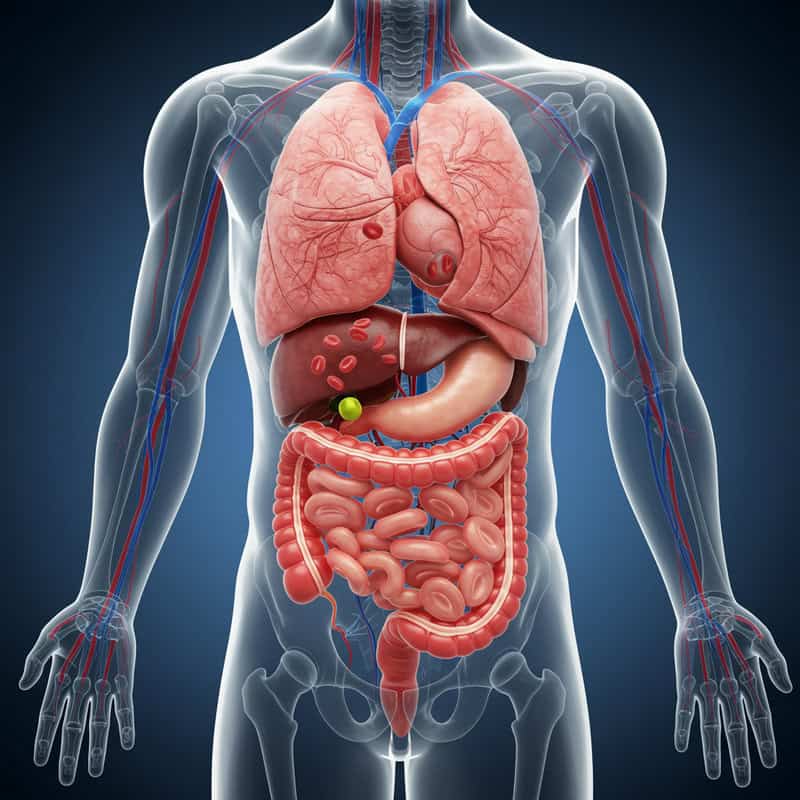
Unexplained anemia occurs when there is a reduction in the number of healthy red blood cells, leading to symptoms such as persistent tiredness, weakness, shortness of breath, and pale or sallow skin. Certain cancers, especially those of the gastrointestinal tract like colon cancer, can cause slow, chronic blood loss that goes unnoticed until anemia develops. Other cancers may affect the bone marrow, the site of blood cell production, further contributing to low red blood cell counts.
For instance, an individual with colon cancer may experience subtle, ongoing blood loss in the stool, resulting in iron-deficiency anemia over time. This can manifest as increasing fatigue and paleness, even in the absence of obvious bleeding. According to the National Cancer Institute, anyone experiencing persistent symptoms of anemia—without a clear explanation such as heavy menstrual periods or dietary deficiency—should request blood tests from their healthcare provider. Early detection of anemia and its underlying cause allows for timely diagnosis and management, which is especially important when cancer is a potential factor. For more information, visit the American Cancer Society.
22. Swelling in the Neck or Face

Swelling in the neck or face can be a noticeable sign of certain cancers, particularly lymphomas or cancers of the thyroid gland. Lymphomas may cause enlarged lymph nodes in the neck, which can feel firm, rubbery, and are often painless. Similarly, thyroid cancers might present as a lump or swelling at the base of the neck, sometimes causing discomfort, difficulty swallowing, or a change in voice. In advanced cases, tumors in the chest (such as lung cancer) can compress veins that return blood from the head and neck, resulting in facial swelling and a condition known as superior vena cava syndrome.
It’s important to differentiate cancer-related swelling from that caused by routine infections, such as a sore throat or cold, which usually leads to tender, soft lymph nodes and resolves within a week or two. Persistent, painless, or progressively enlarging swellings should always be evaluated by a healthcare provider. According to the American Cancer Society and National Cancer Institute, early recognition and assessment of abnormal neck or facial swelling can aid in prompt diagnosis and improve treatment outcomes.
23. Persistent Itching

Persistent itching—also known as pruritus—can sometimes be a symptom of underlying cancers, particularly certain blood cancers. Generalized, unexplained itching may result from the body’s immune response to cancer or from substances released by cancer cells into the bloodstream. For example, Hodgkin lymphoma is well known for causing intense, persistent itching that often affects the entire body, even in the absence of visible skin changes or rashes.
Unlike itching caused by dry skin, allergies, or common skin conditions, cancer-related pruritus does not typically resolve with moisturizers or antihistamines and can be severe enough to disrupt sleep and daily activities. According to the National Cancer Institute, persistent or unexplained itching—especially when accompanied by other symptoms like night sweats, swollen lymph nodes, or unexplained weight loss—should prompt evaluation by a healthcare provider. Tracking the duration, location, and severity of itching can help clinicians determine the underlying cause, ensuring timely diagnosis and appropriate treatment when cancer is suspected.
24. Frequent Infections
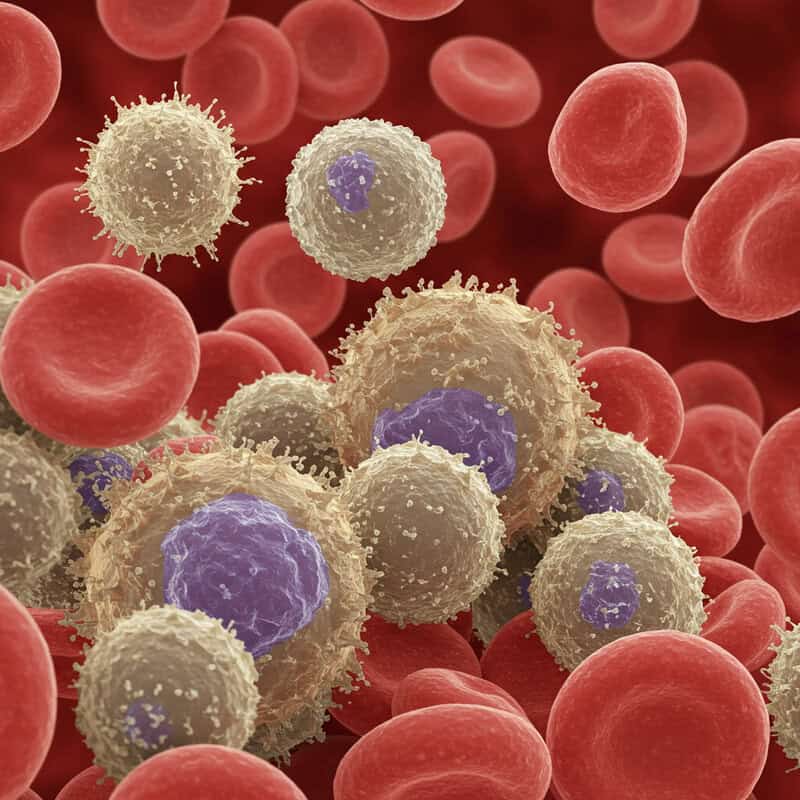
Frequent infections can be a sign of underlying cancers that affect the body’s immune system, most notably leukemia and lymphoma. These cancers disrupt the normal production and function of white blood cells, which are essential for combating bacteria, viruses, and other pathogens. As a result, individuals may experience repeated or unusually severe infections, such as respiratory tract infections, urinary tract infections, or skin infections, that are slow to resolve or recur shortly after treatment.
While it is normal for most people to catch a cold or mild infection a few times a year, recurrent infections—for example, several episodes of bronchitis, sinusitis, or pneumonia within a few months—should raise concern. Infections that are more severe than usual or do not improve with standard antibiotics are also red flags. According to the American Cancer Society and National Cancer Institute, individuals experiencing an abnormal frequency or severity of infections—especially when accompanied by fatigue, fever, or unexplained weight loss—should seek prompt medical evaluation to rule out immune-related cancers and other underlying conditions.
25. Abdominal Swelling

Abdominal swelling can occur when cancers in the liver, ovaries, or other abdominal organs cause fluid to accumulate in the abdominal cavity, a condition known as ascites. Tumors can block lymphatic or blood vessels, produce excess fluid, or invade surrounding tissues, all of which contribute to a noticeably distended abdomen. For example, liver cancer often leads to abdominal swelling as the tumor impedes normal liver function and blood flow, resulting in fluid retention and visible bloating.
Unlike the temporary bloating associated with indigestion or dietary changes, cancer-related abdominal swelling is persistent and may worsen over time. Individuals may notice their waistline increasing, clothes fitting more tightly, or a feeling of heaviness and discomfort in the abdomen. According to the National Cancer Institute, abdominal swelling accompanied by other symptoms such as jaundice, weight loss, or loss of appetite should prompt medical attention. Monitoring the frequency, duration, and associated symptoms of abdominal swelling can help healthcare providers determine the need for further evaluation and ensure timely diagnosis of potential underlying malignancies.
26. Difficulty Breathing

Difficulty breathing, also known as dyspnea, can be a symptom of cancers that involve the lungs or mediastinum (the central area of the chest). Tumors in these regions may obstruct airways, compress lung tissue, or cause fluid buildup around the lungs (pleural effusion), making it harder to breathe. For instance, lung cancer may present with ongoing shortness of breath, wheezing, or chest tightness. Mediastinal tumors can similarly impact airflow by pressing on the trachea or major bronchi.
While asthma and other benign conditions can also cause breathing difficulties, cancer-related dyspnea tends to be persistent, progressive, and less responsive to inhalers or standard treatments. Warning signs include shortness of breath that worsens over time, occurs at rest or during minimal activity, or is accompanied by coughing up blood, chest pain, or unexplained weight loss. The National Cancer Institute recommends prompt evaluation if these symptoms arise, especially if they are new or not explained by a known diagnosis. Timely assessment is crucial for identifying underlying causes and guiding appropriate care.
27. Chest Pain

Chest pain can sometimes be a symptom of cancers involving the lungs, esophagus, or chest wall. Tumors in these regions may irritate nerves, invade surrounding tissues, or cause inflammation, resulting in discomfort or pain that may be sharp, dull, or persistent. For example, lung cancer can cause chest pain that worsens with deep breathing, coughing, or laughing, while esophageal cancer may present as pain or pressure behind the breastbone, especially when swallowing.
It’s important to distinguish cancer-related chest pain from more common causes like heartburn or cardiac pain. Heartburn typically causes a burning sensation after eating, often relieved by antacids, and cardiac pain is usually associated with exertion and may radiate to the arm or jaw. In contrast, chest pain from cancer is often persistent, progressive, and does not respond to standard treatments. According to the National Cancer Institute, any unexplained, ongoing, or worsening chest pain should prompt evaluation by a healthcare professional to rule out serious underlying conditions, including malignancy.
28. Hoarseness Lasting More Than Three Weeks
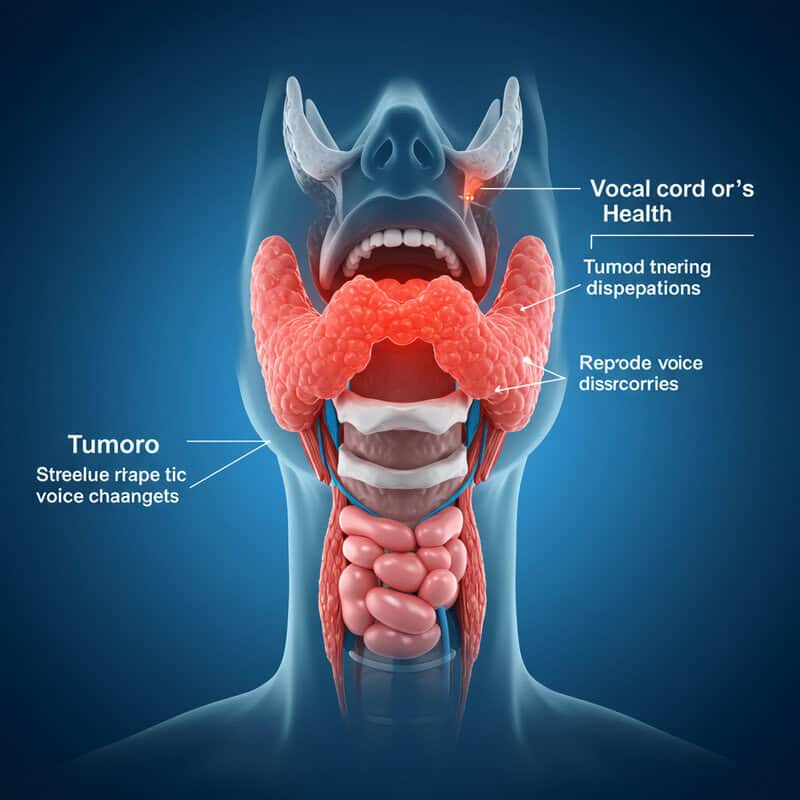
Hoarseness lasting more than three weeks can be an important symptom of cancers affecting the larynx (voice box) or thyroid gland. Tumors in the larynx may directly impact the vocal cords, causing persistent changes in voice quality such as raspy, weak, or breathy tones. Similarly, thyroid cancer can exert pressure on nerves that control the vocal cords, leading to ongoing hoarseness or voice changes. In contrast, hoarseness from common colds or upper respiratory infections is usually associated with other symptoms, such as sore throat, congestion, or cough, and typically resolves within a week or two as the infection clears.
If hoarseness persists beyond three weeks or is not linked to an obvious cause like recent illness or excessive voice use, it should be evaluated by a healthcare provider. According to the American Cancer Society and the National Cancer Institute, early assessment of persistent hoarseness can lead to timely diagnosis and more effective treatment if cancer is the underlying cause. Prompt attention ensures better outcomes and preserves vocal health.
29. Difficulty Urinating
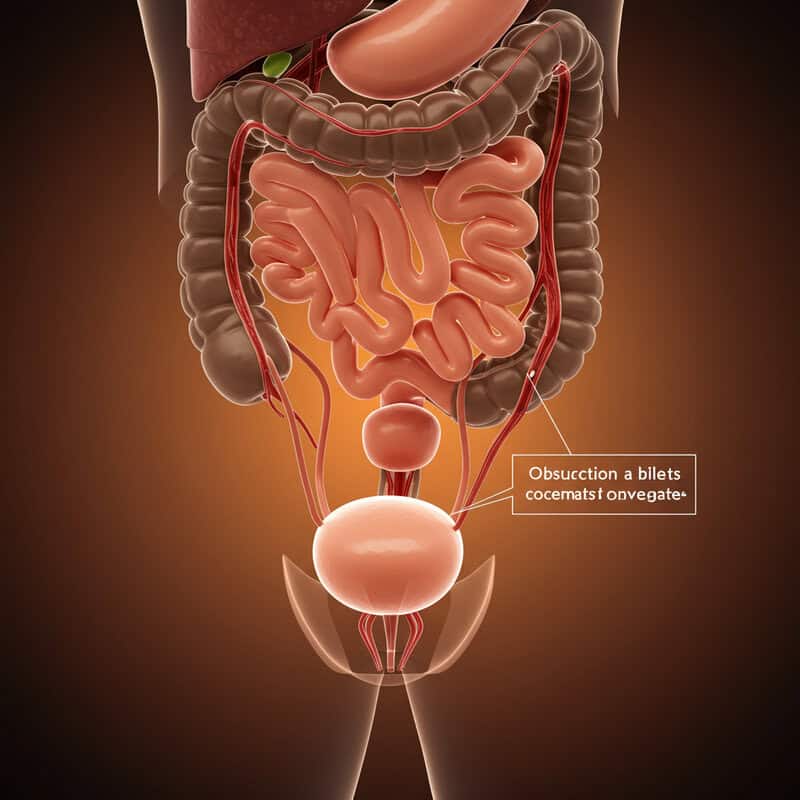
Difficulty urinating can be a significant warning sign of cancers affecting the prostate or bladder. Tumors in these areas may obstruct the normal flow of urine, leading to symptoms such as trouble starting urination, a weak or interrupted stream, dribbling at the end of urination, or a feeling of incomplete bladder emptying. In some cases, individuals may also experience pain or burning during urination, increased frequency, or urgency, particularly at night. For example, prostate cancer can gradually enlarge the gland, pressing against the urethra and causing these urinary difficulties.
While temporary urinary issues can result from infections, dehydration, or benign prostatic hyperplasia (BPH), persistent or worsening symptoms should not be ignored. The National Cancer Institute recommends keeping a symptom diary, noting the frequency, duration, and severity of urinary problems, as well as any associated pain or blood in the urine. If difficulty urinating lasts for more than a few days or is accompanied by other concerning symptoms, prompt evaluation by a healthcare professional is essential. Early diagnosis improves the chances of successful treatment and helps prevent complications related to urinary retention or infection.
30. Blood in Urine

Blood in urine, or hematuria, is a potentially serious symptom that may indicate cancers of the bladder, kidney, or prostate. Tumors in these organs can damage delicate blood vessels or invade surrounding tissue, causing blood to leak into the urinary tract. Hematuria may appear as pink, red, or brown discoloration of the urine, or may only be detectable under a microscope during urine analysis. For example, bladder cancer often presents with painless, visible blood in the urine as an early warning sign.
While urinary tract infections (UTIs) are a common cause of blood in the urine and are typically accompanied by symptoms such as burning, urgency, or fever, cancer-related hematuria often occurs without pain or other signs of infection. According to the National Cancer Institute, any episode of unexplained blood in the urine should prompt prompt evaluation, especially if it recurs or is accompanied by urinary changes. Early assessment is essential for determining the underlying cause and ensuring timely treatment, whether the source is cancer or another medical condition.
31. Unusual Vaginal Bleeding
Unusual vaginal bleeding is a key warning sign of several gynecologic cancers, including those of the cervix, endometrium (uterus lining), and vagina. These cancers can disrupt normal tissue and blood vessels, leading to bleeding outside of regular menstrual cycles, after sexual intercourse, or following menopause. For example, cervical cancer and endometrial cancer often present with spotting or heavier bleeding between periods or after menopause, when any vaginal bleeding is abnormal.
While hormonal changes, infections, or benign growths (like polyps or fibroids) can also cause irregular bleeding, persistent or unexplained episodes should not be ignored. According to the National Cancer Institute, any vaginal bleeding in postmenopausal women or unexpected bleeding in premenopausal women warrants prompt evaluation by a healthcare provider. Early investigation and diagnosis significantly improve outcomes for gynecologic cancers. Keeping a record of bleeding episodes, their duration, and any associated symptoms can assist healthcare professionals in determining the cause and appropriate next steps.
32. Persistent Nausea or Vomiting

Persistent nausea or vomiting can be a symptom of cancers affecting the gastrointestinal tract—such as stomach, pancreatic, or intestinal cancers—or the brain. Tumors in the digestive system may cause blockages, interfere with normal digestion, or release substances that irritate the stomach lining, leading to ongoing queasiness or vomiting. Similarly, brain tumors can increase pressure inside the skull or disrupt areas that control nausea, resulting in repeated or unexplained vomiting.
In contrast, foodborne illnesses or viral infections commonly cause nausea or vomiting but tend to resolve within a few days and are usually accompanied by diarrhea or fever. According to the American Cancer Society and the National Cancer Institute, persistent symptoms lasting more than a week or those that occur without an obvious cause should prompt a medical evaluation. It’s especially important to seek help if nausea or vomiting is severe, accompanied by weight loss, headache, or neurological changes. Early diagnosis and treatment are key to managing underlying conditions, including cancer, and preventing complications such as dehydration or nutritional deficiencies.
33. Difficulty Eating or Loss of Appetite

Difficulty eating or loss of appetite is a frequent symptom in people with various cancers, especially those affecting the digestive system such as gastric (stomach) cancer. Tumors in the stomach, esophagus, or mouth may physically obstruct the passage of food, cause discomfort, or trigger early satiety (feeling full quickly). Additionally, cancer-related inflammation and the body’s immune response can alter metabolism and suppress hunger signals, leading to a marked reduction in appetite.
For example, someone with gastric cancer might notice that they can only eat small portions before feeling uncomfortably full, or that eating causes nausea or pain. Over time, this can lead to significant, unintentional weight loss and nutritional deficiencies. While temporary loss of appetite may occur with stress, infections, or medication changes, persistent symptoms—especially when accompanied by difficulty swallowing, ongoing nausea, or weakness—should prompt medical assessment. The National Cancer Institute and American Cancer Society emphasize the importance of early evaluation to identify underlying causes and guide appropriate care, improving quality of life and treatment outcomes.
34. Changes in Breast Appearance
Changes in breast appearance are important warning signs that may indicate breast cancer. Beyond the presence of a lump, symptoms can include dimpling or puckering of the skin (resembling an orange peel), changes in the shape or size of the breast, inversion or retraction of the nipple, redness, swelling, or thickening of the skin, and discharge from the nipple—especially if it is bloody or occurs without squeezing. Some individuals may also notice an area of the breast feeling unusually warm or tender.
These changes may be subtle and sometimes painless, making regular self-examination and awareness of one’s own baseline breast appearance essential. According to the American Cancer Society, monthly self-exams and awareness can help detect abnormalities early. Additionally, routine mammograms and clinical breast examinations are crucial for early detection, particularly for those at higher risk. If you observe any persistent or unexplained changes in your breast’s appearance or texture, prompt evaluation by a healthcare provider is recommended. For more guidance on breast health and screening, visit the National Cancer Institute.
35. Persistent Hiccups
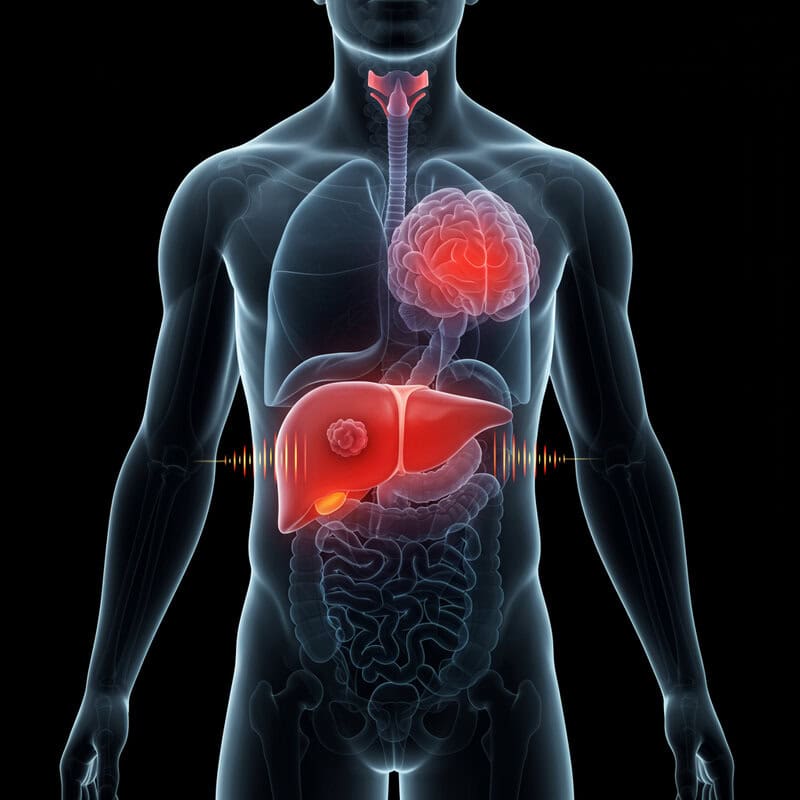
Persistent hiccups—lasting more than 48 hours—can occasionally be a sign of serious underlying conditions, including cancers of the liver or brain. Hiccups are involuntary contractions of the diaphragm, and tumors in the liver can irritate the diaphragm directly, especially if they grow large or cause fluid accumulation. Similarly, brain tumors may affect areas that control the diaphragm through nerve irritation or increased intracranial pressure, leading to chronic hiccups. These cancer-related hiccups are often resistant to typical home remedies and may persist for days or weeks.
In contrast, most hiccups are benign, triggered by eating too quickly, consuming carbonated beverages, sudden temperature changes, or mild digestive upset, and usually resolve on their own within minutes or hours. According to the National Cancer Institute, persistent or severe hiccups that interfere with eating, sleeping, or daily activities warrant prompt medical evaluation, particularly if they are accompanied by other concerning symptoms such as abdominal pain, headache, or neurological changes. Early assessment can help identify the underlying cause, including rare but serious conditions like cancer.
36. Swelling in the Legs

Swelling in the legs, known as edema, can occur when cancers block lymphatic or venous flow, leading to fluid accumulation in the lower extremities. Tumors in the pelvis, abdomen, or lymph nodes—such as those from ovarian, uterine, or prostate cancer—may compress major veins or lymphatic vessels, slowing the return of blood and lymphatic fluid from the legs. This results in persistent swelling, sometimes accompanied by skin changes, heaviness, or discomfort. For example, ovarian cancer can obstruct pelvic lymph nodes, causing one or both legs to swell noticeably.
Leg swelling from cancer typically develops gradually and may not improve with rest or elevation. In contrast, edema related to heart or kidney failure is usually associated with additional symptoms like shortness of breath, fatigue, or changes in urination and often affects both legs equally. According to the National Cancer Institute, any unexplained, persistent, or worsening leg swelling—especially if accompanied by pelvic pain, abdominal distension, or sudden onset—should be evaluated by a healthcare provider to identify the cause and guide appropriate management.
37. Jaundice (Yellowing of Skin/Eyes)

Jaundice refers to the yellowing of the skin and the whites of the eyes, caused by a buildup of bilirubin—a yellow pigment produced during the breakdown of red blood cells. This symptom is often associated with cancers that affect the liver, bile ducts, or pancreas. Tumors in these organs can block the normal flow of bile, preventing bilirubin from being eliminated from the body. For instance, pancreatic cancer may cause painless jaundice if the tumor compresses the bile duct.
Early signs of jaundice include a yellowish tint to the eyes or skin, dark urine, pale stools, and sometimes generalized itching. In contrast to jaundice caused by hepatitis or gallstones, cancer-related jaundice is often gradual and painless, though it may be associated with other symptoms such as weight loss or abdominal pain. According to the National Cancer Institute, any new or persistent yellowing of the skin or eyes should prompt medical evaluation. Early recognition and diagnosis are crucial for addressing the underlying cause and improving patient outcomes.
38. Enlarged Lymph Nodes

Enlarged lymph nodes are a common sign in several types of cancer, most notably lymphomas and metastatic cancers. Lymph nodes are small, bean-shaped structures that filter lymphatic fluid and play a crucial role in the body’s immune response. When cancer develops in the lymphatic system, as in lymphoma, or spreads (metastasizes) from other sites, lymph nodes may become enlarged, firm, and sometimes painless.
For example, an individual with lymphoma might notice swollen nodes in the neck, armpit, or groin that do not resolve over several weeks and are not tender to the touch. In cases of metastatic disease, cancer cells can travel through the lymphatic system and lodge in lymph nodes near the original tumor site or in distant regions, causing noticeable swelling. In contrast, lymph node enlargement from infections is usually tender, soft, and subsides after the infection resolves. According to the National Cancer Institute, persistent, unexplained lymph node enlargement should prompt medical assessment for timely diagnosis and intervention, especially when accompanied by other symptoms like fever, night sweats, or weight loss.
39. Unexplained Bone Pain

Unexplained bone pain can be a significant symptom of primary bone cancers such as osteosarcoma or cancers that have spread (metastasized) to the bones from other organs, such as the breast, prostate, or lung. This type of pain is generally described as deep, aching, and persistent, often worsening at night or with activity. Tumors may weaken the bone structure, increasing the risk of fractures and further discomfort.
In contrast, arthritis typically causes joint pain and stiffness that is most pronounced with movement or after periods of inactivity and often improves with rest or anti-inflammatory medications. Bone pain from cancer, however, does not usually respond to routine pain relief and may progressively intensify over time. According to the National Cancer Institute, persistent or unexplained bone pain—especially if it is localized, severe, or associated with swelling or reduced range of motion—should be promptly evaluated. Early recognition and assessment are essential for identifying bone cancers or metastatic disease and initiating appropriate treatment to improve quality of life and outcomes.
40. Numbness or Tingling

Numbness or tingling sensations can occur when tumors press on or invade nerves, disrupting normal sensory signals. This is especially common with cancers affecting the spine, such as metastatic tumors from breast, lung, or prostate cancer. As a tumor grows near or within the spinal column, it can compress spinal nerves or the spinal cord itself, leading to symptoms such as numbness, tingling, or even weakness in the arms, legs, or trunk. These sensations may begin subtly and gradually worsen, sometimes progressing to difficulty with coordination or walking.
Unlike the fleeting numbness that occurs from sitting in one position too long or the tingling from minor nerve irritation, cancer-related sensory changes are usually persistent and may worsen over days or weeks. According to the National Cancer Institute, sudden or progressive numbness, tingling, or weakness—especially if accompanied by back pain, bladder or bowel changes, or loss of balance—should prompt immediate medical evaluation. Early recognition of nerve involvement is crucial for preserving neurological function and improving treatment outcomes in patients with spinal or nerve-involving tumors.
41. Unexplained Mouth Bleeding

Unexplained mouth bleeding can be a symptom of cancers affecting the oral cavity or blood. Oral cancers, such as those of the tongue, gums, or inner cheek, may cause fragile or ulcerated tissues that bleed easily—even with minimal irritation or routine activities like brushing teeth or eating. Persistent bleeding may also be accompanied by other signs, such as a lump, sore that doesn’t heal, or changes in the texture or color of mouth tissues. For more information about oral cancer symptoms, visit the American Cancer Society.
Additionally, certain blood cancers, including leukemia, can disrupt normal blood clotting processes, making the gums and other oral tissues more prone to spontaneous bleeding. Unlike bleeding caused by trauma or dental procedures, cancer-related mouth bleeding tends to be frequent, difficult to control, and can occur without an obvious cause. According to the National Cancer Institute, persistent or unexplained oral bleeding warrants prompt medical or dental evaluation to determine the underlying cause and initiate appropriate treatment.
42. Difficulty Speaking

Difficulty speaking—such as slurred words, trouble finding the right words, or changes in voice clarity—can be a symptom of cancers affecting the brain or throat. Brain tumors can impact areas responsible for language, speech production, and muscle coordination, leading to gradual or sudden changes in a person’s ability to articulate thoughts or pronounce words. Similarly, cancers of the larynx, pharynx, or other parts of the throat can interfere with the movement of vocal cords and muscles required for clear speech, sometimes producing a hoarse, weak, or breathy voice.
Unlike the abrupt onset of speech difficulties associated with a stroke, which typically appears suddenly and may be accompanied by facial drooping or arm weakness, cancer-related speech changes often develop more gradually over days or weeks. According to the American Cancer Society and National Cancer Institute, persistent difficulties with speech—especially when accompanied by other neurological symptoms or swallowing problems—should be promptly evaluated to determine the underlying cause and begin appropriate treatment.
43. Changes in Sense of Smell or Taste

Changes in sense of smell or taste can occur as a result of cancer itself or as a side effect of cancer treatments. Tumors in the head and neck region, such as those affecting the mouth, nose, throat, or sinuses, can disrupt nerve pathways and tissues responsible for detecting odors and flavors. For example, head and neck cancers may cause food to taste bland, metallic, or otherwise unusual, while certain smells may seem diminished or distorted.
Cancer treatments—including chemotherapy and radiation—can also damage taste buds, saliva production, or the olfactory nerves, further altering sensory experiences. These changes are different from the temporary loss of taste or smell associated with colds or sinus infections, which usually resolve in a week or two. According to the National Cancer Institute, persistent or unexplained changes in taste or smell that interfere with eating or enjoyment of food should be discussed with a healthcare provider. Early intervention can help manage symptoms and improve nutrition and quality of life during cancer care.
44. Unexplained Sweating (Daytime)

Unexplained daytime sweating—episodes of excessive perspiration not related to physical activity, heat, or emotional stress—can be a manifestation of systemic cancers, particularly blood cancers like lymphoma and leukemia. These malignancies can alter the body’s temperature regulation and immune response, leading to sweats that occur throughout the day and are often accompanied by other symptoms such as fever, weight loss, or fatigue. Unlike normal sweating, which has clear triggers and stops when the stimulus is removed, cancer-related sweating tends to be persistent and may soak through clothing even when sitting or resting.
For example, Hodgkin lymphoma is well known for causing “B symptoms,” which include unexplained fevers and drenching sweats both at night and during the day. While daytime sweating can be caused by anxiety, menopause, or infection, it is concerning when it persists without an obvious cause or is associated with other unexplained symptoms. The National Cancer Institute recommends seeking medical advice if daytime sweating is frequent, severe, or accompanied by other warning signs to rule out underlying malignancies and ensure timely treatment.
45. Early Satiety (Feeling Full Quickly)

Early satiety—the sensation of feeling full after eating only a small amount of food—can be a significant warning sign of cancers affecting the stomach or ovaries. Tumors in the stomach may physically restrict the organ’s capacity or interfere with normal digestive processes, causing a person to feel full or bloated after just a few bites. Similarly, ovarian cancer can lead to the accumulation of fluid (ascites) or tumor growth in the abdomen, both of which exert pressure on the stomach and contribute to early satiety.
For example, someone with gastric cancer may notice a sharp decrease in appetite and difficulty finishing even small meals, leading to unintentional weight loss and nutritional deficiencies. In contrast, early satiety caused by stress or a temporary digestive upset is usually short-lived and resolves on its own. According to the National Cancer Institute, persistent early satiety—especially when accompanied by other symptoms such as bloating, abdominal discomfort, or weight loss—should prompt timely medical evaluation to identify and address possible underlying conditions, including cancer.
46. Persistent Gas or Cramping

Persistent gas or cramping can be an early and sometimes subtle sign of gastrointestinal cancers, including those of the colon, stomach, or pancreas. Cancerous growths can partially obstruct or irritate the digestive tract, leading to ongoing bloating, abdominal pain, or cramping that does not resolve with routine dietary changes or over-the-counter remedies. Unlike the transient discomfort associated with eating certain foods or mild indigestion, cancer-related symptoms tend to persist and may increase in intensity over time.
For example, someone with colorectal cancer may experience chronic lower abdominal cramps, excessive gas, or feelings of fullness that are not relieved by passing gas or having a bowel movement. These symptoms can sometimes be confused with irritable bowel syndrome (IBS), which typically causes intermittent cramps, bloating, and changes in bowel habits. However, IBS symptoms are often triggered by stress or certain foods and tend to fluctuate, whereas cancer-related cramps are usually more persistent and progressive. The National Cancer Institute advises that ongoing abdominal gas or cramping lasting more than a few weeks warrants medical evaluation to rule out serious underlying conditions such as cancer.
47. Red or Dark-Colored Stools
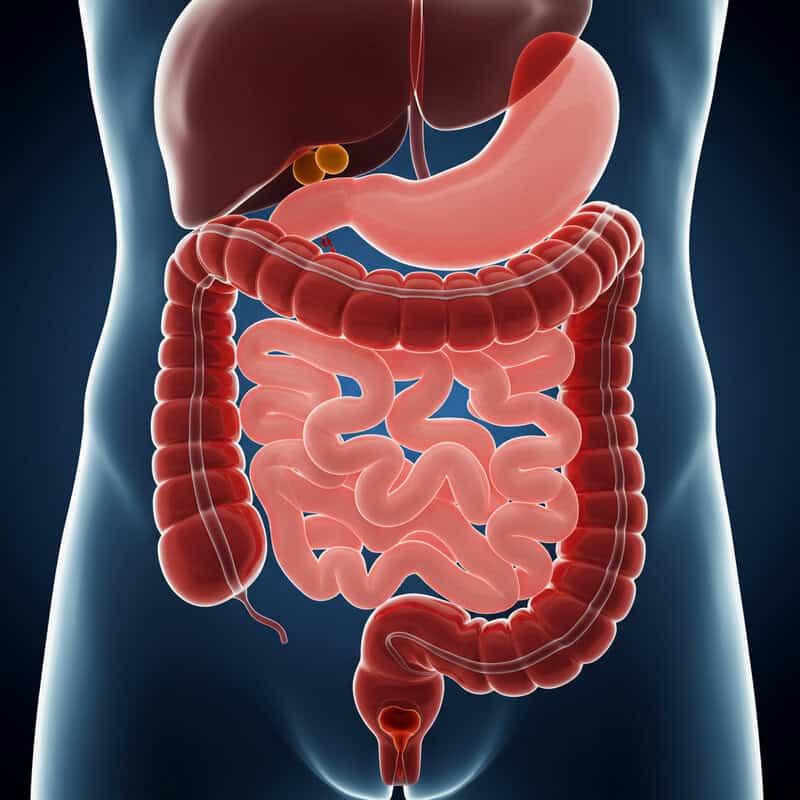
Red or dark-colored stools can be a sign of bleeding somewhere in the digestive tract, most commonly related to colon or rectal cancer. Blood from a tumor in the colon or rectum may appear as bright red streaks or spots on the surface of the stool, especially if the bleeding source is near the end of the intestines. If the bleeding occurs higher up in the digestive tract, the blood is partially digested, resulting in stools that are black or tarry in appearance (melena). These color changes are different from those caused by certain foods (such as beets or iron supplements) and warrant careful attention.
For example, someone with colorectal cancer may notice ongoing rectal bleeding or dark stools, often accompanied by changes in bowel habits, abdominal pain, or unexplained weight loss. According to the National Cancer Institute, any episode of unexplained red or dark-colored stools—especially if persistent or recurrent—should prompt prompt medical evaluation. Early detection and diagnosis are key to effective treatment and improved outcomes for digestive tract cancers.
48. Persistent Sore Throat

Persistent sore throat is a symptom that can be associated with throat cancers, particularly those affecting the pharynx or larynx. Cancerous growths in these areas can cause chronic irritation, inflammation, or ulceration of throat tissues, leading to a sore throat that does not resolve with standard treatments or home remedies. The discomfort may be accompanied by difficulty swallowing, a sensation of something being stuck in the throat, changes in voice, or even ear pain.
Unlike a sore throat caused by viral or bacterial infections—which typically improves within one to two weeks and is often accompanied by fever, nasal congestion, or cough—cancer-related sore throat persists for weeks or even months. It may not respond to antibiotics or other common therapies and may gradually worsen. According to the American Cancer Society, a sore throat lasting longer than three weeks, especially if associated with other symptoms like hoarseness or a neck lump, should prompt evaluation by a healthcare professional. Early diagnosis is essential for effective treatment and improving outcomes for throat cancer. More information is available from the National Cancer Institute.
49. Unexplained Fractures
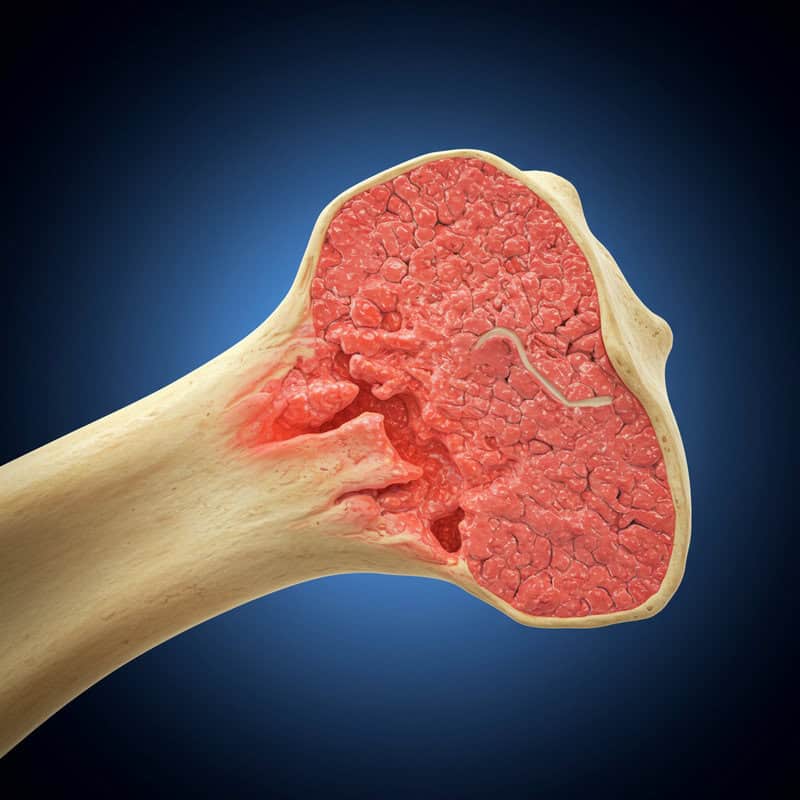
Unexplained fractures—breaks in bones that occur without a significant fall, trauma, or obvious cause—can be a warning sign of underlying bone-weakening cancers. Primary bone cancers such as osteosarcoma or cancers that have metastasized (spread) to the bones from organs like the breast, prostate, or lung can erode the bone’s structure. These cancerous lesions weaken the bone, making it more susceptible to breaking during routine activities or minor stress that would not normally cause injury.
For instance, a person may experience a sudden fracture in the hip, spine, or arm while walking, lifting a light object, or even turning in bed. This is distinct from fractures due to osteoporosis or accidental falls, which usually have a clear explanation. According to the National Cancer Institute, any fracture occurring without a known cause or after minimal trauma should be evaluated for possible malignancy, especially in individuals with a history of cancer or persistent bone pain. Early recognition and assessment are important for preventing further injury and initiating appropriate treatment for bone cancers or metastatic disease.
50. Changes in Handwriting or Fine Motor Skills

Changes in handwriting or fine motor skills can be a subtle but significant symptom of brain tumors, especially those located in areas that control movement and coordination. Tumors in the brain can disrupt neural pathways responsible for precise hand movements, leading to difficulty with tasks that require dexterity, such as buttoning clothes, using utensils, or writing. For example, individuals may notice their handwriting becoming shakier, smaller, or less controlled over time, or find it increasingly challenging to perform activities that once felt effortless.
These changes are different from age-related stiffness, arthritis, or temporary fatigue. According to the American Cancer Society, deterioration in fine motor skills may also be accompanied by other neurological symptoms such as weakness, numbness, or balance difficulties. Subtle signs—such as dropping objects more frequently or struggling to manipulate small buttons—should not be ignored, especially if they develop progressively over weeks or months. The National Cancer Institute recommends seeking prompt medical evaluation if changes in coordination or movement persist, as early diagnosis is essential for effective treatment and preserving quality of life.
Conclusion

Recognizing the early signs and symptoms of cancer can be lifesaving, as prompt action often leads to better treatment outcomes. While many symptoms can have benign causes, persistent or unexplained changes in your health should never be ignored. If you notice any of the warning signs described above, discuss your concerns with a healthcare provider for timely evaluation. Regular cancer screening—such as mammograms, colonoscopies, or skin checks—may also be recommended based on your age and risk factors. For more information on cancer prevention and early detection, visit the American Cancer Society and the National Cancer Institute.
Disclaimer
The information provided in this article is for general informational purposes only. While we strive to keep the information up-to-date and correct, we make no representations or warranties of any kind, express or implied, about the completeness, accuracy, reliability, suitability, or availability with respect to the article or the information, products, services, or related graphics contained in the article for any purpose. Any reliance you place on such information is therefore strictly at your own risk.
In no event will we be liable for any loss or damage including without limitation, indirect or consequential loss or damage, or any loss or damage whatsoever arising from loss of data or profits arising out of, or in connection with, the use of this article.
Through this article you are able to link to other websites which are not under our control. We have no control over the nature, content, and availability of those sites. The inclusion of any links does not necessarily imply a recommendation or endorse the views expressed within them.
Every effort is made to keep the article up and running smoothly. However, we take no responsibility for, and will not be liable for, the article being temporarily unavailable due to technical issues beyond our control.




